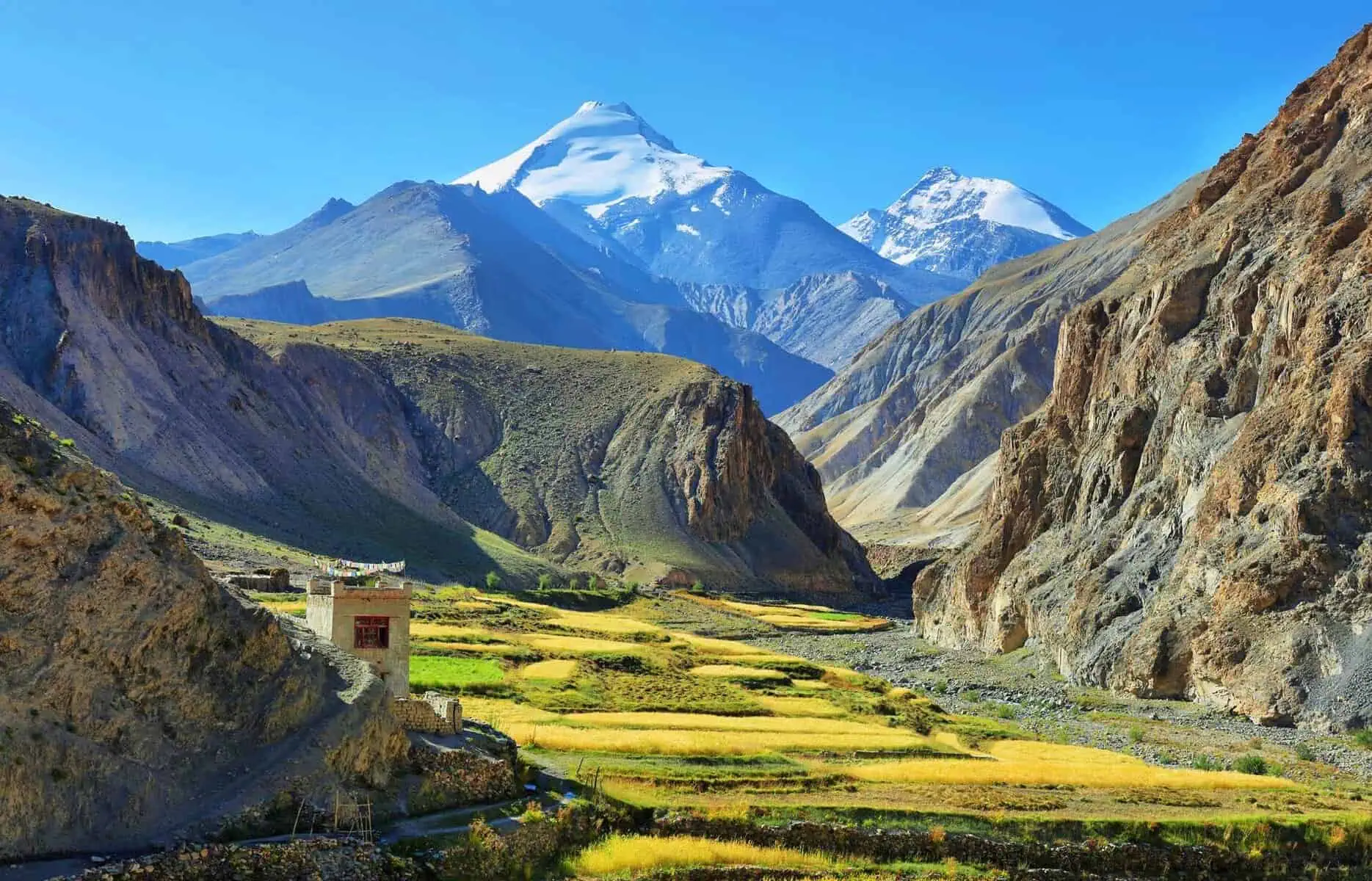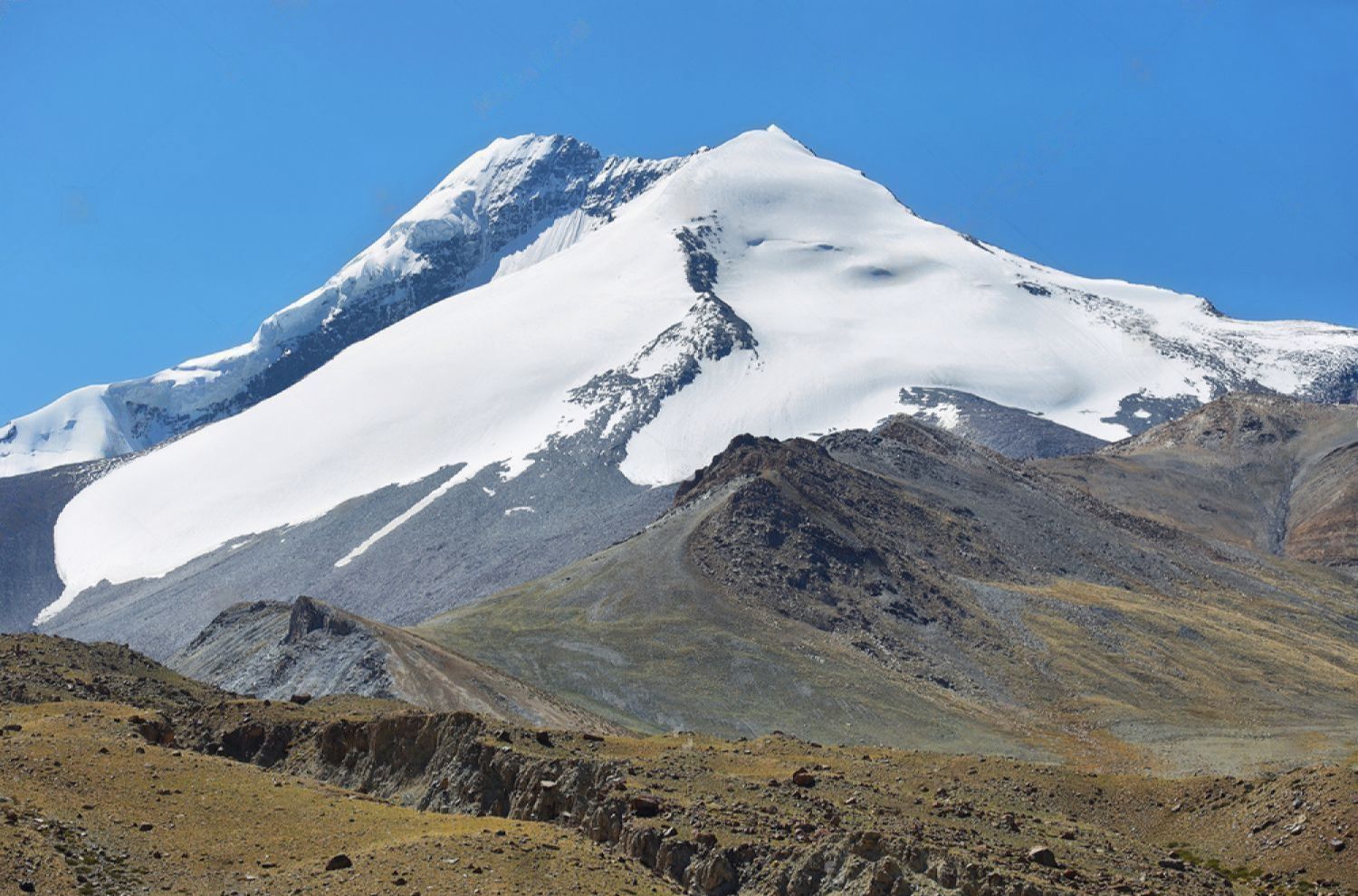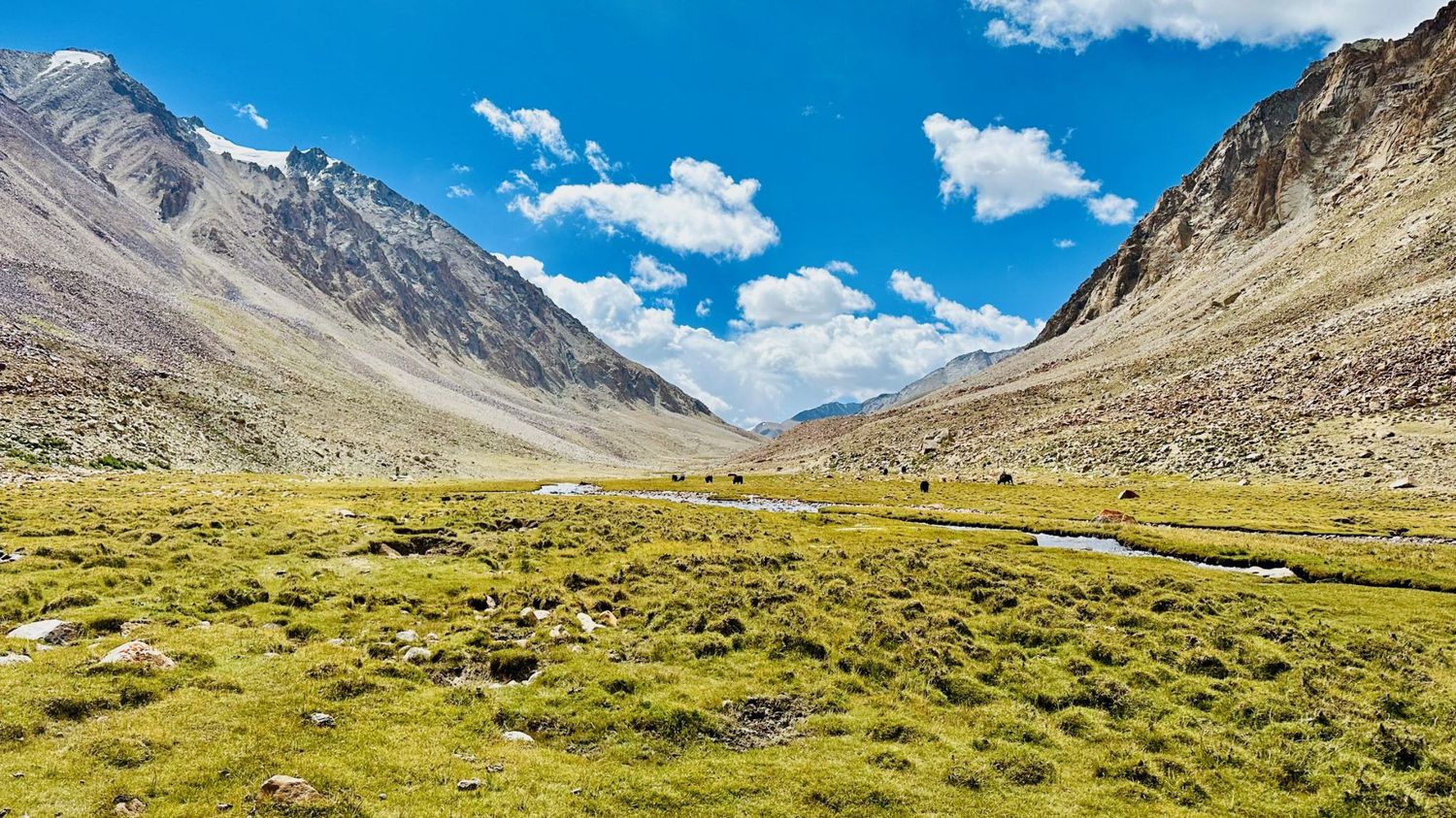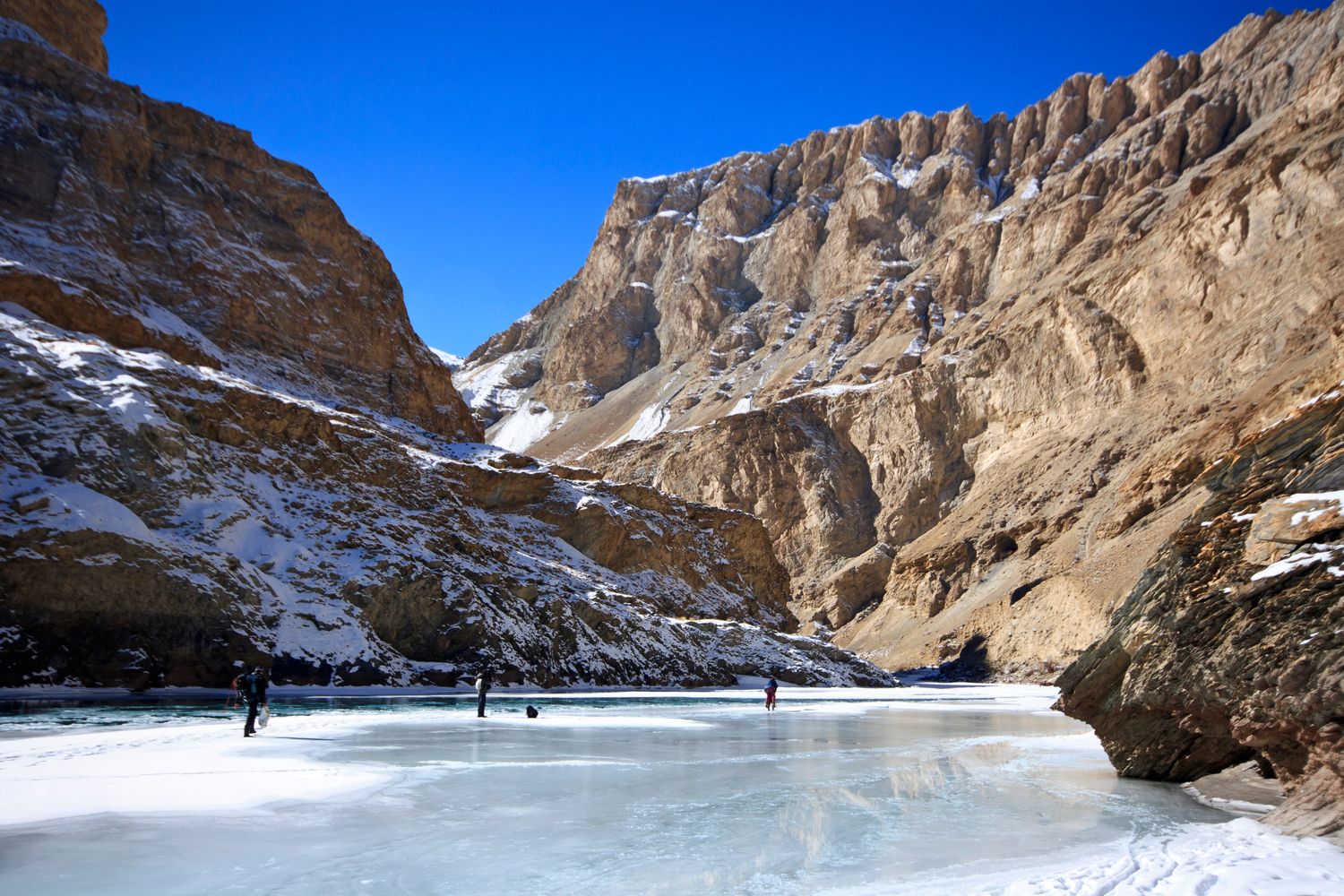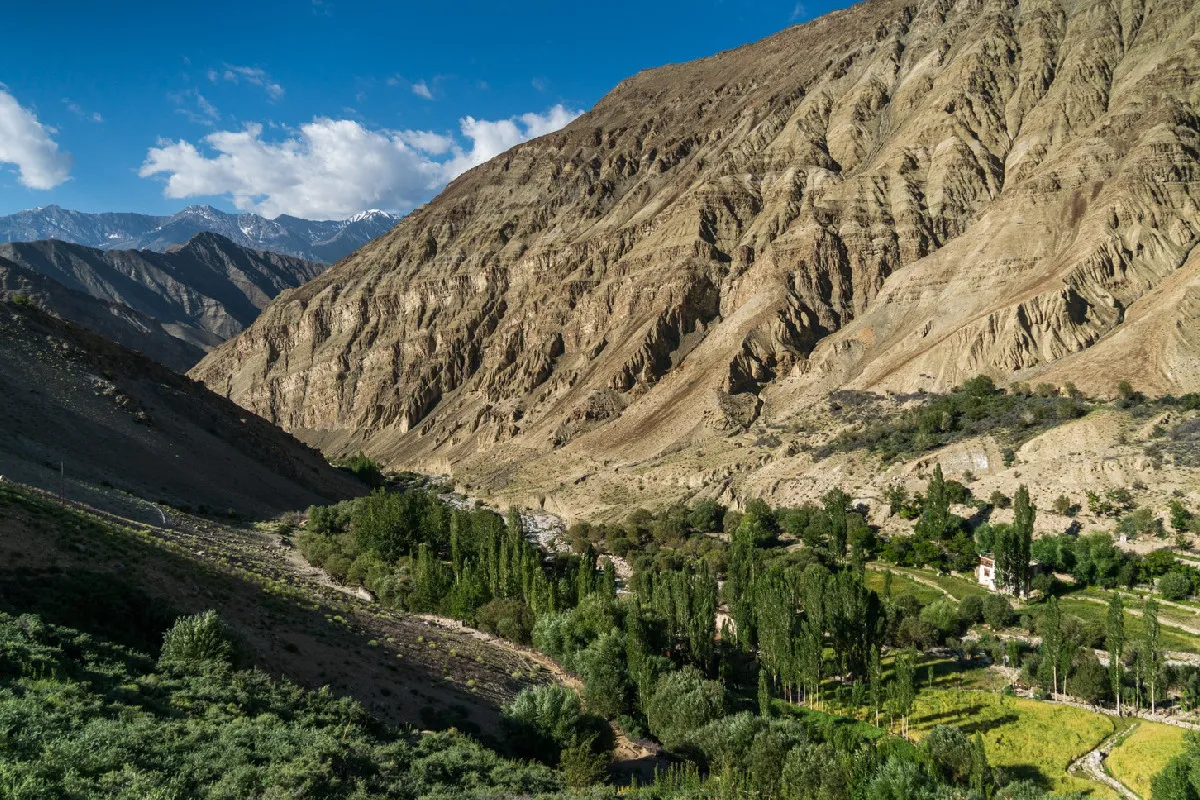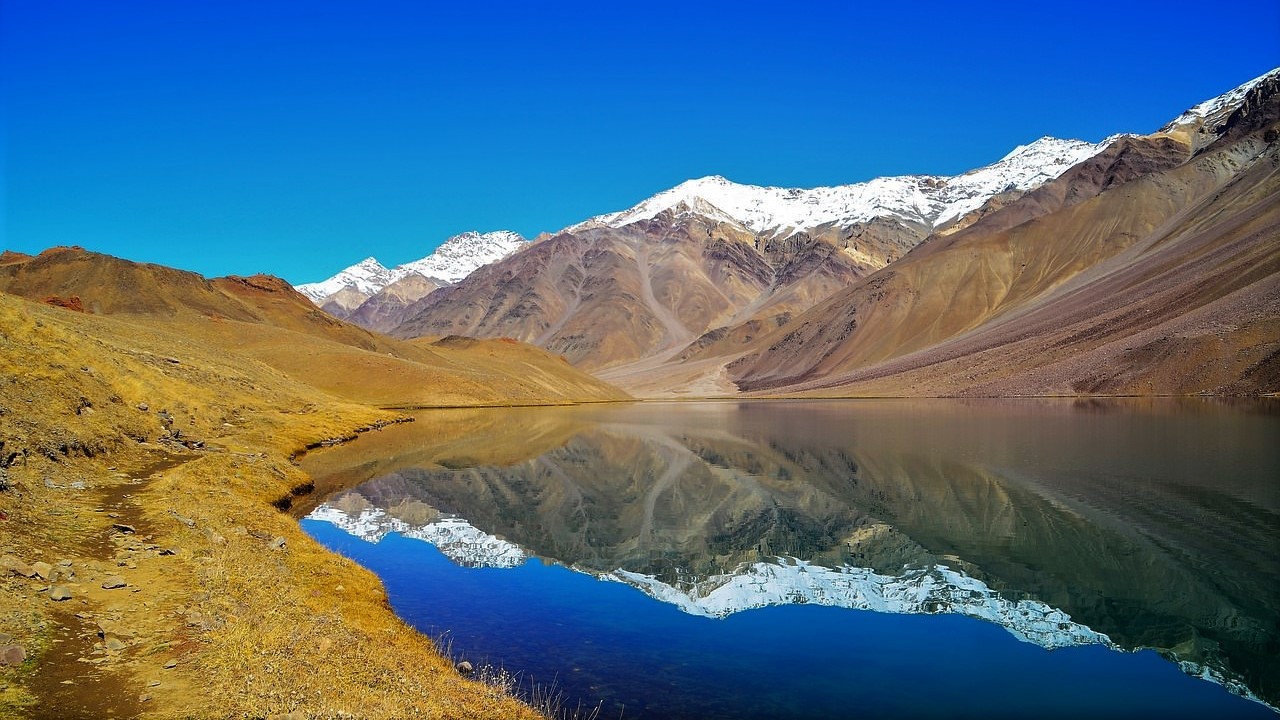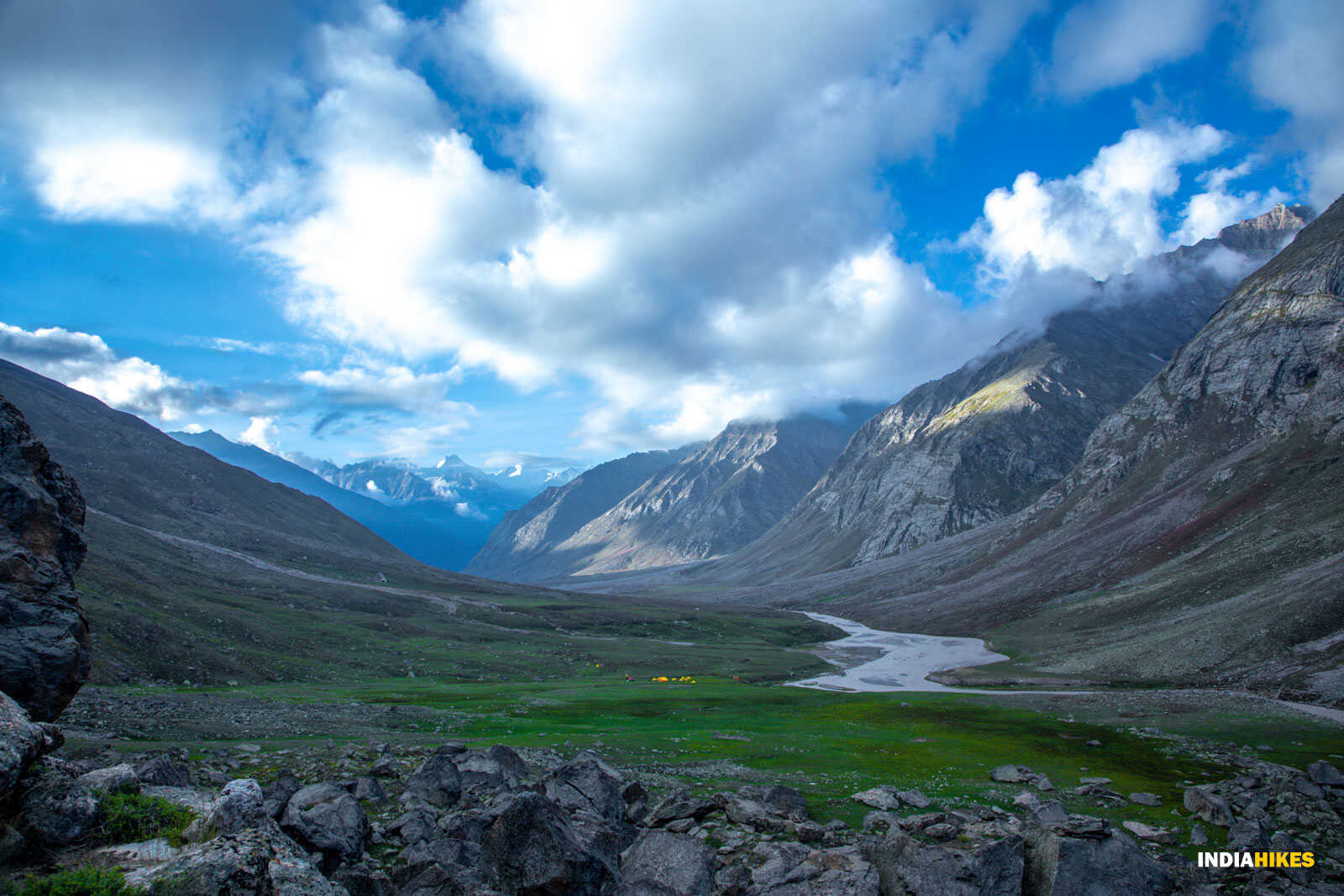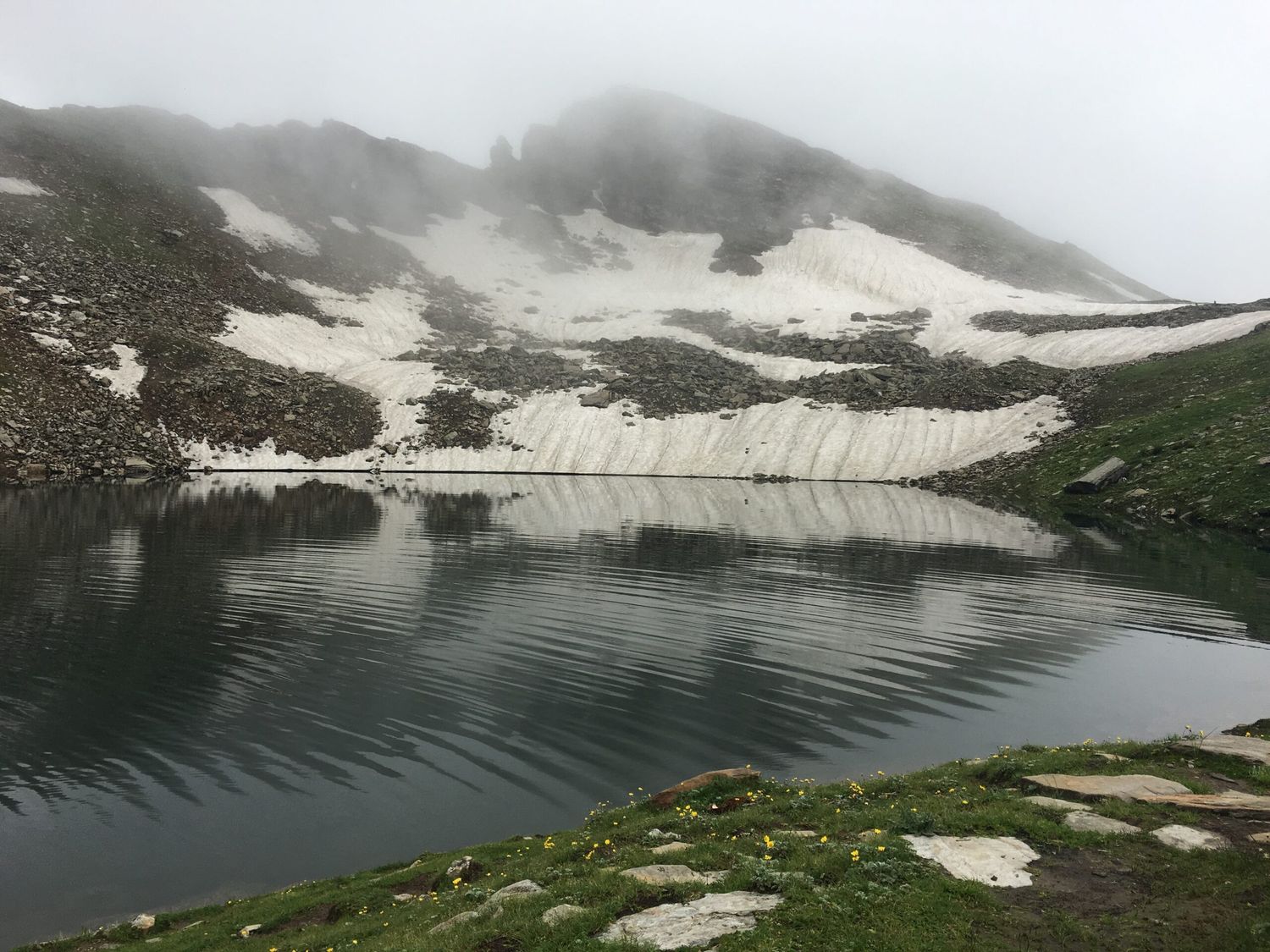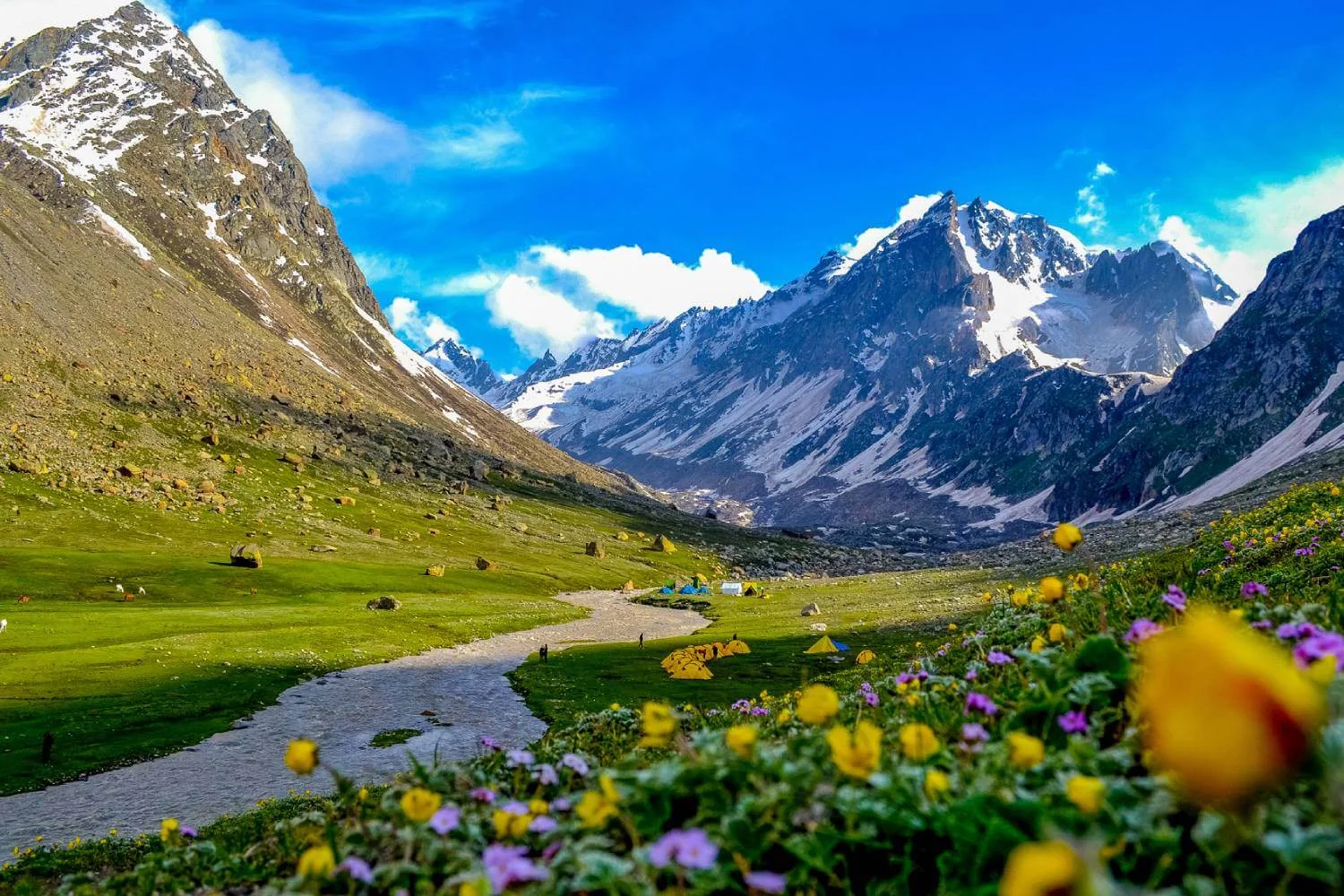Markha Valley Trek: Ladakh’s Most Iconic Cultural Adventure
The Markha Valley Trek is the crown jewel of Ladakh’s trekking scene, offering a rare blend of high-altitude desert landscapes, dramatic gorges, and deeply spiritual Tibetan culture. This trail takes you through quaint villages, prayer-flag-lined passes, and alongside the bubbling Markha River — all under the shadow of towering snow-capped peaks like Kang Yatse and Stok Kangri.
The Trail Through the “Little Tibet”
Markha Valley is often called “Little Tibet” for good reason. The trek passes through remote Buddhist villages where traditional Ladakhi life continues untouched. Expect to see whitewashed homes, stupas, mani walls, and ancient monasteries perched on cliffs.
Kang Yatse Peak: The Silent Giant
One of the trek’s highlights is the view of the 6,400-meter Kang Yatse peak. As you near Nimaling, it looms dramatically ahead, turning each campsite into a photo-worthy frame.
High-Altitude Passes and Deep Gorges
From crossing icy rivers barefoot to scaling the 5,260 m Kongmaru La pass, this trek throws plenty of adventure your way. The contrast of narrow gorges and wide green pastures keeps the trail visually stunning throughout.
Why This Trek is Unforgettable
It’s not just about landscapes. It’s about immersion — in silence, in culture, in remoteness. You may see blue sheep, golden eagles, or even snow leopards. Add to that the stunning Himalayan light and dry desert climate, and you’ve got a journey of a lifetime.
